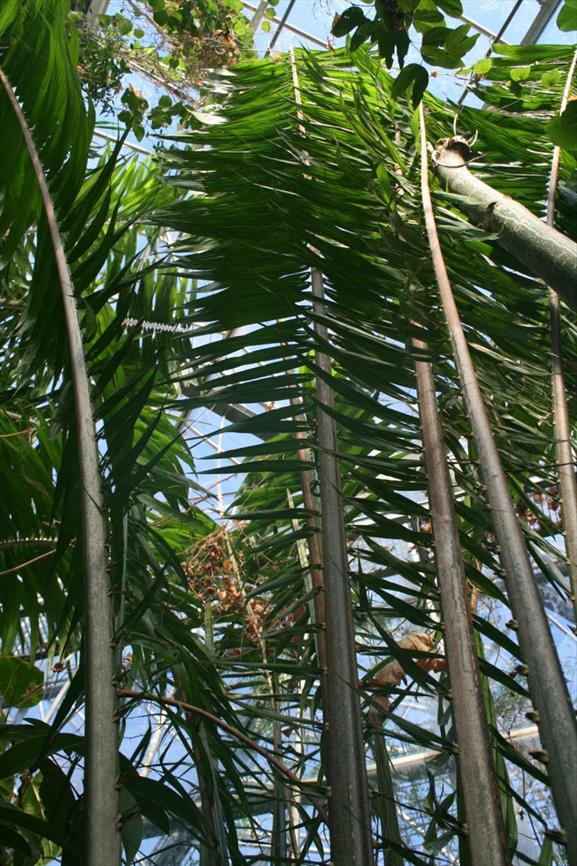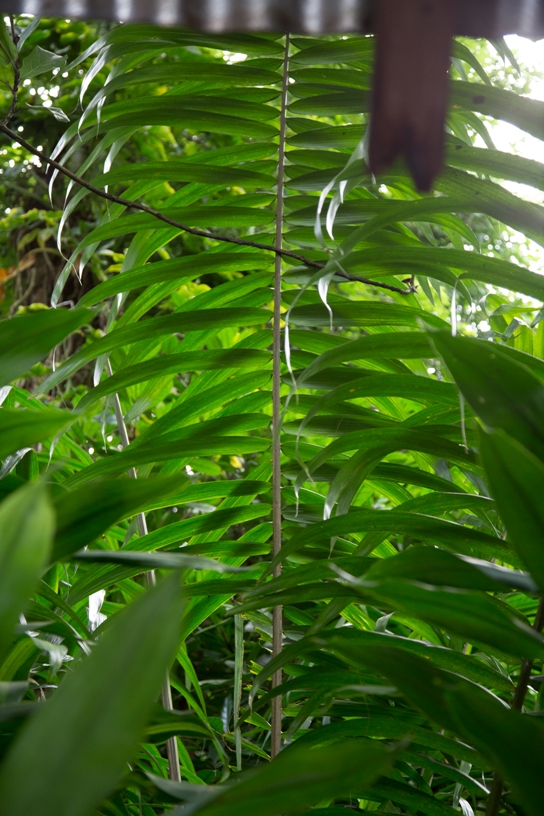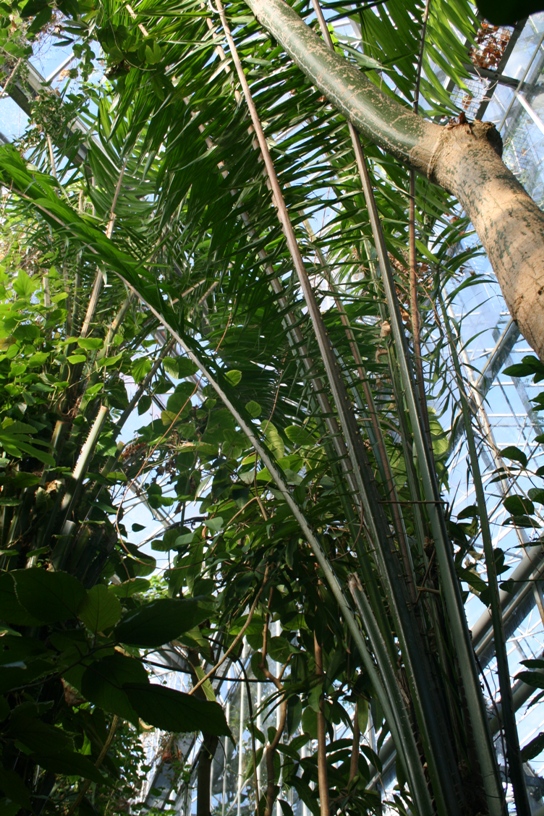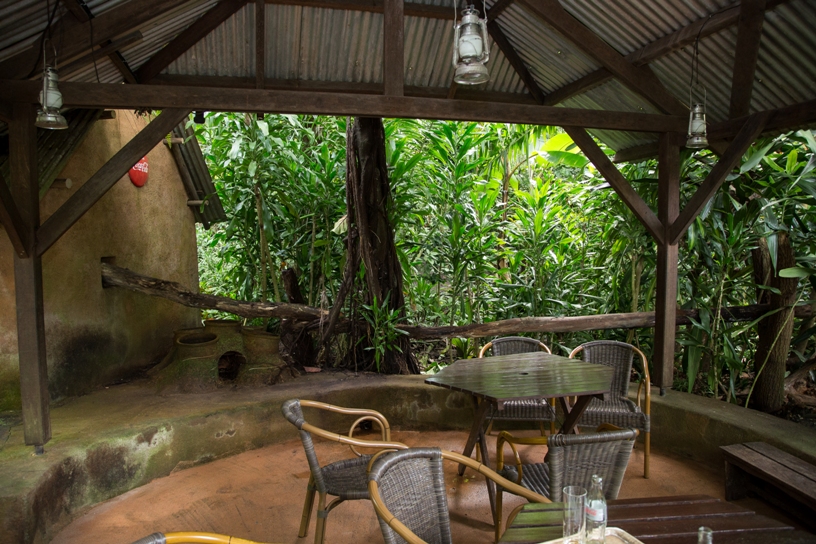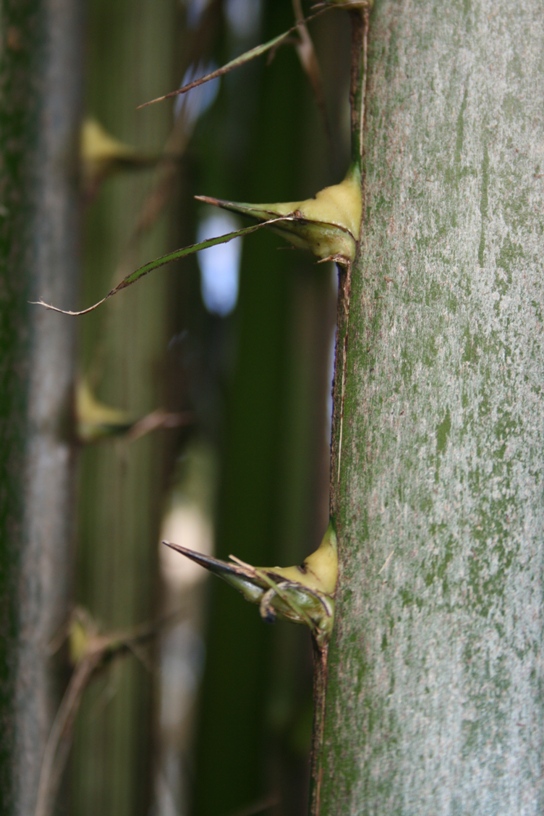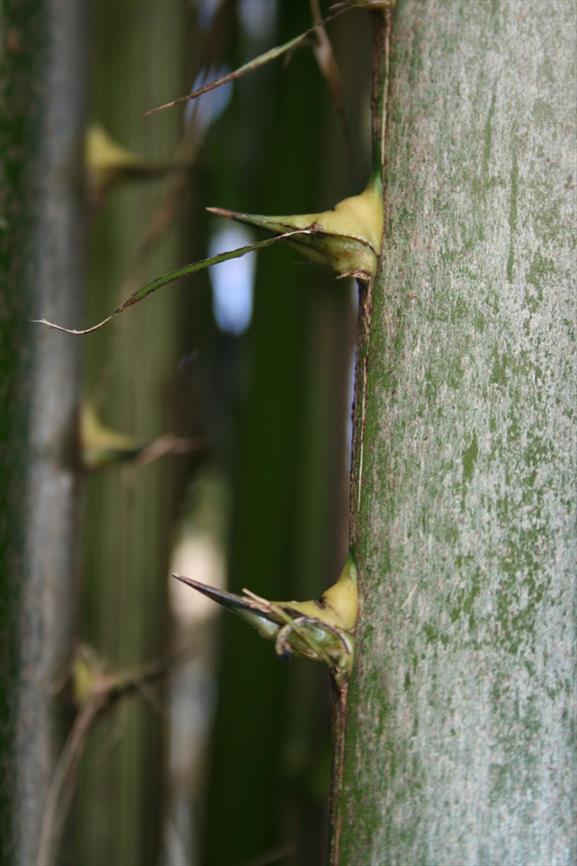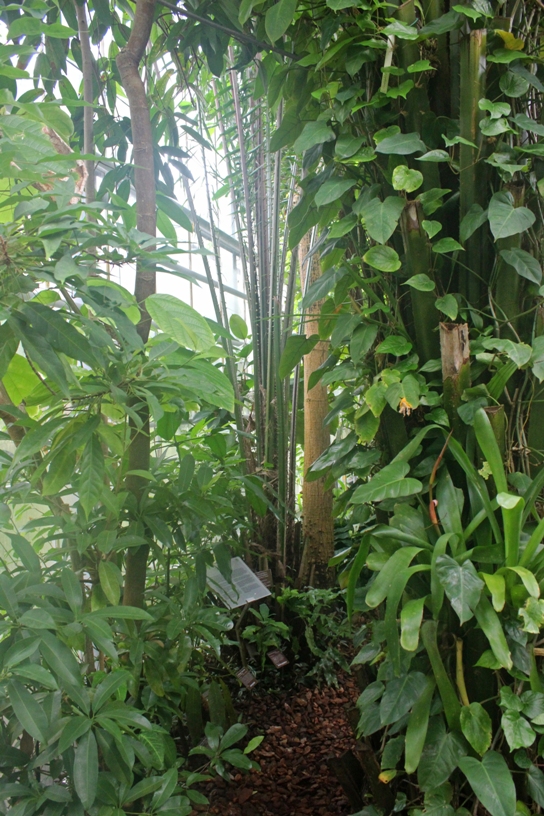African Oil-palm
Elaeis guineensis
Palm family (Arecaceae)
A success but with a question mark
The African oil palm is native to West Africa. The Dutch took plant material and seeds to the former Dutch East Indies and from there the plant has spread throughout Southeast Asia. The inflorescence consists of many small, tightly packed cream-white flowers. The clusters of hundreds of orange, 5 cm long fruits can weigh up to 25 kilos. Oil is extracted from both the fruit and seeds.
Palm oil is the most widely used vegetable oil in the world and is used in both food and non-food products such as ice cream, margarine, biscuits, lipstick, soap and biodiesel. The main palm oil producing countries are Indonesia with 24 million tonnes and Malaysia with 19 million tons. There is much criticism surrounding the methods of cultivation of oil palm. The Dutch palm oil processing industry aspires to sustainably produce all palm oil destined for the Dutch market.
Themes
Crown jewel in the Hortus Botanicus Amsterdam.
The African oil palm kernel provides oil used in the manufacture of soaps, talcum powders and detergents. After the extraction of oil from the kernels, the resultant cake provides an important food for livestock.
The oil palm is a major source of oil for human food use. Palm oil from the fleshy mesocarp of the African oil palm is used in the manufacture of margarine and compound cooking fats. The colourless oil is obtained from the kernel or endosperm and is used in edible fats in both the confectionary and bakery trades, and in the preparation of ice cream and mayonnaise. Palm wine is produced from the sap obtained by tapping the male inflorescence. The central shoot or 'palm heart' is also edible.
Palm oil contains vitamins E and A. The sap has a medicinal role in the cure of malaria, measles, jaundice and to stimulate the flow of breast milk in nursing mothers.
Biomedical research indicates that palm oil, which is high in saturated fat, increases the risk of cardiovascular disease.
Details
| Description: | Tree, palm up to 20-30 m, monoecious. |
|---|---|
| Distributions: | West africa |
| Habitat: | Riverine forests, lowland with annual minimum rainfall of 2000 mm and tempertures 24°-28°c. |
| Hardiness: | Warmer than 59 f (heated glasshouse - tropical) |
| Flower color: | White |
| Notes on flowers: | Male flowers on short downy branches 10-15 cm long, set close to trunk on short pedicels; female flowers, and subsequently the fruits, in large clusters of 200-300, close to the trunk on short heavy pedicels. |
